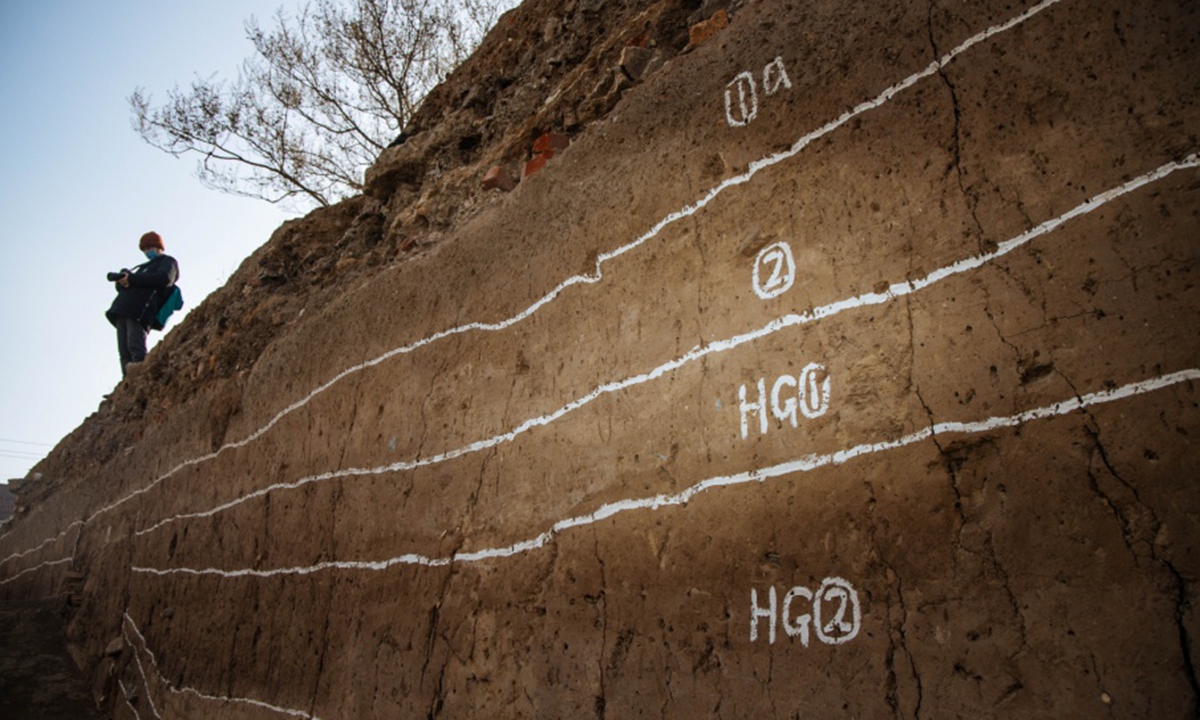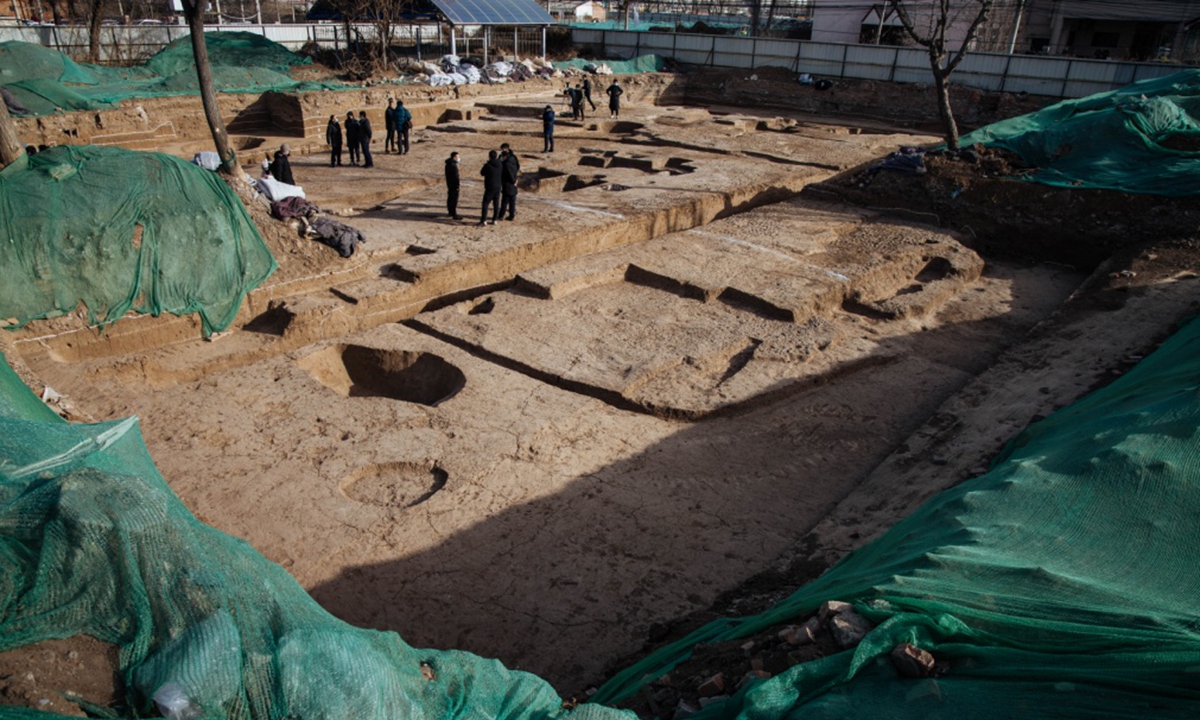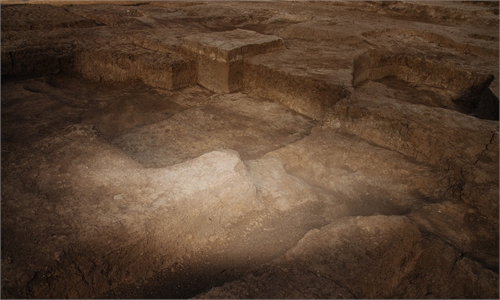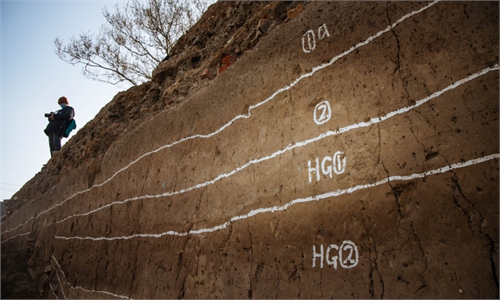ARTS / CULTURE & LEISURE
850-year-old city wall unveiled in Beijing, moat found for first time

The remains of the Jin moat in Beijing Photo: Li Hao/GT
The cultural heritage authorities in Beijing on Wednesday showcased the latest findings in the archaeological excavation of a city wall section from the Jin Dynasty (1115 -1234).
The architectural excavation site, located in Fengtai district of southwestern Beijing, has unearthed a 60-meter section of city wall ruins, including a 66-meter-wide moat, defense structures of the wall and some bricks and china chips from renowned Ding and Jun kilns. It is the first time that archaeologists have found a Jin moat in Beijing.
The excavation made clear the position relationship between city walls, the moat and streets inside the city, the Global Times learned.
Some tombs from the Tang and Liao dynasties were also found under the wall.
Beijing, which used to be called Zhongdu, was set as the capital of the Jin kingdom in 1153. This was the first time that Beijing was the capital of a Chinese kingdom. Zhongdu was the Jin's capital for 62 years.

The remains of the Jin moat in Beijing Photo: Li Hao/GT
The city wall was abandoned at the end of the Yuan Dynasty or the beginning of the Ming Dynasty in the 14th Century, Ding Lina, a research fellow at the Beijing Municipal Administration of Cultural Heritage, told the Global Times.According to Ding, the biggest difficulty in the excavation is damage from residents' daily life. "Locals took earth from the heritage site and dumped rubbish there," she said.
Located beside the new Lize Financial Business District of Beijing, the Zhongdu city wall is set to be developed into a park in the future. The construction will start in 2022.



